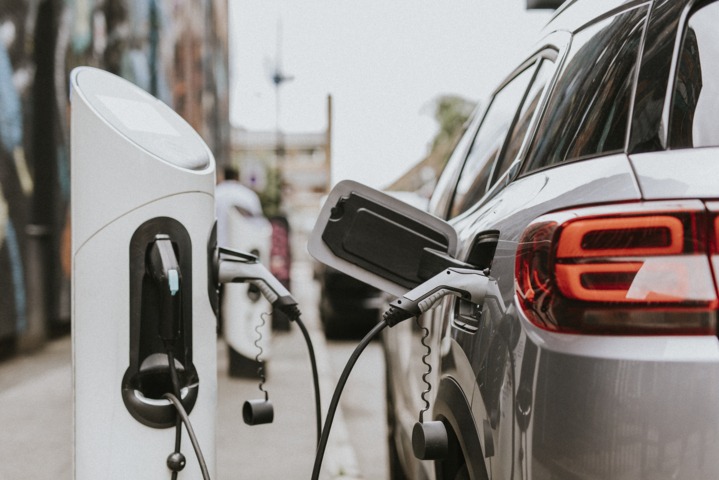Charging an Electric Car in the UK: Options for Those Without Off-Street Parking
Living in the UK and owning an electric car can be a challenge if you don’t have off-street parking. In order to charge your EV, you need access to a charging point, which is typically installed at home or in a designated parking spot. However, there are still options available for those without off-street parking.
One option is to charge your electric car at your workplace. Many employers are now installing charging points in their car parks, allowing employees to charge their EVs while they work. This can be a convenient option for those who work long hours and need to charge their car frequently.
Another option is to use on-street charging points, which are becoming more common in the UK. These charging points are typically installed on lampposts or other street furniture, making them accessible to anyone with an electric car. There are also rapid charging hubs located in various locations throughout the UK, which can provide a quick charge for your EV when you’re on the go.
Why Off Street Parking is Necessary for Charging an Electric Car
Off-street parking is necessary for charging an electric car because charging an EV requires a dedicated charging point that needs to be installed at your home or workplace. This charging point needs to be connected to a power source and requires a dedicated cable to be plugged into your car.
Charging an electric car can take several hours, and it is not practical to do this on the street as it can pose several safety risks. For example, the charging cable can be a trip hazard, and it can be damaged by passing cars or pedestrians. Additionally, charging an electric car on the street may require running a cable across the pavement, which can be a potential hazard for other pedestrians.
Another factor to consider is that charging an electric car requires a significant amount of electricity, and it may not be possible to run a charging point from a standard domestic power supply. Therefore, off-street parking is necessary to ensure that there is a dedicated power supply available to charge your EV.
While it may be challenging to install a charging point in some areas, there are several options available to those who do not have off-street parking. These include charging at a workplace, on-street parking via lampposts, and rapid charging hubs.
Charging at a workplace is a viable option for those who do not have off-street parking. Many employers are now installing charging points in their car parks to encourage employees to switch to electric cars. This can be a convenient option, as you can charge your car while you work.
On-street parking via lampposts is another option for those who do not have off-street parking. Several local authorities in the UK are now installing charging points on lampposts to make it easier for people to charge their EVs. This option is particularly useful for those who live in urban areas, where off-street parking can be challenging to find.
Rapid charging hubs are also becoming more common in the UK. These are dedicated charging stations that can deliver a full charge in less than an hour. Rapid charging hubs are typically located in convenient locations, such as motorway service stations, and can be a useful option for those who need to charge their EV quickly.
It is important to note that the frequency at which you need to charge your EV will depend on several factors, such as the model of your car, your driving habits, and the type of charger you are using. However, as a general rule, most EVs need to be charged at least once a week, and some may need to be charged more frequently.
Charging at WorkPlaces
Charging an electric vehicle at work is a great option for many EV owners. It allows you to top up your car’s battery while you’re working, without having to worry about finding a public charging station or having access to off-street parking at home.
Many workplaces are now offering EV charging stations as an employee benefit. This means that you can charge your car for free while you’re at work, making it a convenient and cost-effective option.
Charging at work can also be faster than charging at home, as many workplace charging stations are Level 2 chargers, which can provide up to 25 miles of range per hour of charging. This means that you can easily top up your car’s battery during your workday, without having to wait too long.
Another benefit of charging at work is that it can help to reduce range anxiety. If you have a longer commute, or if you need to make multiple trips during the day, charging at work can help to ensure that you always have enough range to get where you need to go.
If your workplace doesn’t currently offer EV charging, you may want to consider talking to your employer about the benefits of installing charging stations. There are also government grants and incentives available to help offset the cost of installing charging stations at workplaces.
On Street Parking via Lampposts
One solution for people who don’t have off-street parking is charging their electric car via lampposts on the street. This solution is gaining popularity in the UK, with many local authorities installing lamppost chargers to meet the growing demand for EV charging.
Lamppost chargers work by using a small charging unit attached to the lamppost, which is connected to the electricity grid. EV drivers can park their car next to the lamppost and use a cable to connect their car to the charger. Lamppost chargers typically provide a slower charging rate, but they are still a convenient option for those who need to charge their car while parked on the street.
Some local authorities offer a subscription service for lamppost chargers, which allows EV drivers to access the chargers at a discounted rate. Others may offer a pay-as-you-go option, where drivers pay for the electricity they use.
It’s important to note that not all streets will have lamppost chargers installed, and availability may vary depending on your location. However, if you live in an area with lamppost chargers, this can be a convenient and affordable way to charge your EV without off-street parking.
Rapid Charging Hubs
Rapid charging hubs are a great option for EV owners who don’t have off-street parking. These hubs are located in public areas and can charge your car in a matter of minutes. They are typically found in high-traffic areas such as shopping centers, motorway service areas, and public car parks.
One of the biggest advantages of rapid charging hubs is the speed at which they can charge your EV. These chargers can fully charge your car in as little as 30 minutes, making them ideal for those who need a quick top-up while running errands or traveling long distances.
Another advantage of rapid charging hubs is their availability. There are currently over 20,000 public charging points in the UK, and this number is growing all the time. This means that you are never too far away from a charging point, even if you don’t have off-street parking.
However, it is worth noting that rapid charging hubs can be more expensive than charging your car at home. The cost of charging your EV at a public charging point can vary depending on the provider and the location, so it’s worth doing your research before you use one.
Overall, rapid charging hubs are a convenient and reliable option for EV owners who don’t have off-street parking. They offer fast charging times and are widely available across the UK.
How Often You Need to Charge Your EV
The frequency with which you need to charge your electric vehicle (EV) depends on several factors, including the size of your car’s battery, your driving habits, and the availability of charging stations. Generally, it is recommended that you charge your EV whenever you have the opportunity to do so. This will help ensure that you always have enough power for your next journey.
If you have a smaller battery, you may need to charge your EV more frequently than someone with a larger battery. For example, if you have a Nissan Leaf with a 40 kWh battery, you may need to charge your car every 100 miles or so. However, if you have a Tesla Model S with a 100 kWh battery, you may be able to travel up to 370 miles on a single charge.
Your driving habits will also impact how often you need to charge your EV. If you primarily use your car for short trips around town, you may be able to go several days without needing to charge. However, if you frequently take long road trips, you will likely need to stop and charge more frequently.
It’s important to note that you don’t need to fully charge your EV every time you plug it in. In fact, it’s often more efficient to “top up” your battery when you have the chance. For example, if you have a 50% charge and you only need to travel a short distance, you may only need to charge your car for 30 minutes or so to get the extra power you need.
Lastly, it’s worth noting that the availability of charging stations will impact how often you need to charge your EV. If you have access to charging stations at home, work, or along your regular routes, you may be able to charge more frequently and with greater convenience. However, if charging stations are few and far between, you may need to plan your trips more carefully to ensure that you have enough power to get where you need to go.


